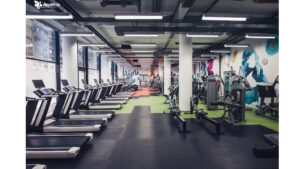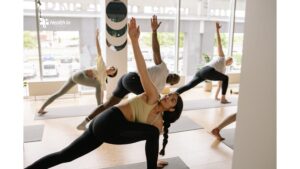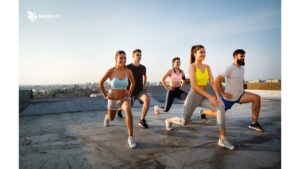
Introduction
Fitness is more than just working out; it’s a commitment to improving your physical health, mental well-being, and overall quality of life. In 2024, fitness remains one of the most effective ways to boost energy, build strength, and foster resilience in both body and mind. Whether you’re just beginning your journey or looking to elevate your current routine, there’s no better time to focus on achieving your health goals.
This guide explores the benefits of fitness, highlights trending workouts, and provides practical tips to help you create a sustainable and enjoyable fitness routine.
The Benefits of Fitness
Engaging in regular physical activity offers a wide range of advantages for your body and mind. Here’s how fitness can transform your life:
1. Improves Physical Strength
Fitness routines, especially those involving strength training, help build muscle, increase bone density, and enhance overall strength. This not only improves your athletic performance but also supports daily tasks like lifting, carrying, and climbing stairs.
2. Boosts Cardiovascular Health
Cardio exercises, such as running, swimming, or cycling, strengthen your heart and lungs. Regular cardiovascular workouts reduce the risk of heart disease, lower blood pressure, and improve stamina.
3. Enhances Mental Clarity
Exercise stimulates the release of endorphins, which enhance your mood and reduce stress. Additionally, fitness activities improve cognitive function and memory by increasing blood flow to the brain.
4. Aids Weight Management
Physical activity burns calories and boosts metabolism, making it easier to achieve and maintain a healthy weight when combined with proper nutrition.
5. Supports Longevity
Studies show that regular exercise extends lifespan by reducing the risk of chronic diseases like diabetes, obesity, and certain cancers. Fitness keeps your body strong and resilient as you age.
Trending Fitness Workouts for 2024
Fitness trends continue to evolve, offering exciting new ways to stay active and motivated. Here are some of the most popular workouts this year:
1. Functional Fitness
This workout style focuses on exercises that mimic everyday movements, improving strength, balance, and mobility. Functional fitness is ideal for individuals of all ages and fitness levels.
2. High-Intensity Interval Training (HIIT)
HIIT remains a favorite for those short on time. It involves bursts of high-intensity exercises followed by short rest periods, delivering maximum results in minimal time.
3. Hybrid Workouts
Combining strength training, cardio, and flexibility exercises in one session, hybrid workouts offer a comprehensive approach to fitness. Many gyms and online platforms now offer customizable hybrid classes.
4. Recovery-Focused Sessions
With a growing emphasis on rest and recovery, fitness routines now include foam rolling, stretching, and low-impact exercises like yoga to promote muscle repair and relaxation.
5. Outdoor Fitness
Getting outside for workouts like hiking, running, or park-based boot camps adds a refreshing twist to traditional fitness routines while connecting you to nature.
How to Build a Sustainable Fitness Routine
Creating a fitness routine that fits your lifestyle is key to achieving lasting results. Here’s how to set yourself up for success:
1. Set Clear Goals
Determine your fitness objectives—whether it’s weight loss, muscle gain, or improved endurance. Specific goals will help guide your workout choices.
2. Start Small
If you’re new to fitness, begin with manageable sessions of 15–20 minutes and gradually increase the duration and intensity as you grow stronger.
3. Choose Activities You Enjoy
Find workouts that you genuinely look forward to, whether it’s dancing, cycling, or lifting weights. Enjoyable activities make it easier to stay consistent.
4. Incorporate Rest Days
Rest is essential for recovery and preventing burnout. Schedule at least one or two rest days each week to give your body time to repair and recharge.
5. Track Your Progress
Use a exercise app or journal to record your workouts and monitor your achievements. Seeing your progress can keep you motivated and on track.
Fitness and Mental Health
Fitness isn’t just about physical strength—it also plays a critical role in mental health. Regular exercise reduces stress, boosts mood, and increases self-confidence. Here are some ways fitness benefits your mind:
- Stress Relief: Physical activity lowers cortisol levels, helping you feel more relaxed and focused.
- Improved Sleep: Fitness routines can regulate your sleep cycle, leading to better rest and increased energy.
- Emotional Resilience: Working out helps you manage emotions constructively, providing a healthy outlet for frustration or anxiety.
Building a Support System
A strong support system can make your fitness journey more enjoyable and sustainable. Surrounding yourself with encouraging people can help you stay accountable and motivated.
1. Join Group Classes
Fitness classes offer a social and energetic atmosphere that can keep you engaged and inspired.
2. Work Out with a Friend
Having a workout buddy adds an element of fun and accountability to your routine.
3. Participate in Online Communities
Virtual exercise groups and social media challenges connect you with like-minded individuals, even from the comfort of your home.
Overcoming Common Barriers
Many people face challenges when starting or maintaining a Exercise routine. Here’s how to tackle common obstacles:
- Lack of Time: Opt for short, efficient workouts like HIIT or 20-minute circuits.
- Low Motivation: Set small, achievable goals to build momentum and reward yourself for hitting milestones.
- Fear of Injury: Focus on proper form and consult a trainer if needed to ensure safe and effective workouts.
Enhancing Fitness Through Holistic Practices
Fitness is not just about physical strength or endurance—it’s about creating a balanced approach that nurtures every aspect of your well-being. By incorporating holistic practices into your fitness routine, you can build a stronger connection between your mind, body, and overall health. Whether you’re seeking improved flexibility, mental clarity, or emotional resilience, a well-rounded fitness journey can lead to transformative results.
Integrating Mindfulness into Fitness
Mindfulness, often associated with meditation and yoga, can be a game-changer when paired with traditional workouts. Being mindful during exercise means focusing fully on the present moment, which helps you connect with your body and improve your performance.
- Enhance Focus: Instead of zoning out during workouts, concentrate on your breathing, muscle engagement, and movement patterns. This attention not only improves form but also makes each session more effective.
- Boost Motivation: Mindful fitness can make even challenging workouts feel rewarding, as it encourages you to appreciate what your body is capable of achieving.
- Reduce Stress: Combining mindfulness with physical activity, such as a nature walk or yoga flow, can create a calming experience that relieves stress and anxiety.
For beginners, simple practices like focusing on your breath during a stretching session or paying attention to how your muscles feel during strength training can introduce mindfulness into your routine.
Diversifying Your Fitness Routine
Routines are essential for consistency, but variety is key to staying engaged and avoiding plateaus. Diversifying your fitness activities keeps your body challenged and your mind interested.
- Try Cross-Training: Incorporate different types of workouts, such as combining strength training, cardio, and flexibility exercises, to work various muscle groups and improve overall performance.
- Explore Outdoor Activities: Activities like hiking, paddleboarding, or rock climbing not only provide physical benefits but also allow you to connect with nature and break free from the monotony of indoor workouts.
- Join Group Classes: From spin classes to dance-based workouts, group fitness sessions can bring a sense of camaraderie and motivation while introducing new styles of movement.
By mixing up your routine, you’ll not only prevent boredom but also ensure that you’re targeting different areas of fitness, including strength, endurance, and agility.
The Role of Recovery in Fitness
Recovery is an often-overlooked aspect of fitness that is critical for long-term progress. Allowing your body to rest and repair reduces the risk of injury and enhances your ability to perform during workouts.
- Incorporate Active Recovery: Engage in low-impact activities, such as walking or gentle yoga, to promote blood flow and help your muscles recover.
- Use Recovery Tools: Foam rollers, massage guns, and stretching bands can relieve muscle tension and improve mobility.
- Prioritize Sleep: Quality sleep is essential for repairing tissues, restoring energy, and maintaining motivation for your fitness routine.
Treating recovery as a vital part of your fitness plan ensures that you stay consistent without overtraining or feeling fatigued.
Building a Fitness-Friendly Environment
Your surroundings play a significant role in supporting your wellness goals. Creating a space that encourages movement and wellness can help make fitness a seamless part of your life.
- Designate a Workout Space: Whether it’s a corner in your living room or a home gym, having a dedicated area for exercise makes it easier to stay consistent.
- Keep Equipment Accessible: Simple tools like resistance bands, dumbbells, or yoga mats can motivate you to engage in short workouts throughout the day.
- Surround Yourself with Inspiration: Place motivational quotes, wellness goals, or progress photos in your workout area to remind yourself why you started.
Even small changes in your environment can make a big difference in maintaining a fitness-focused lifestyle.
Staying Consistent Amid Life’s Challenges
Life can sometimes get in the way of your fitness routine, but adaptability is key to staying consistent. Here are strategies to maintain your progress during busy or stressful times:
- Opt for Short Workouts: High-intensity sessions or quick home circuits can be just as effective as longer workouts when time is limited.
- Schedule Your Workouts: Treat fitness like an important appointment by blocking out time in your calendar.
- Focus on What You Can Do: If you’re unable to complete a full session, even a 10-minute stretch or walk can help you maintain momentum.
The ability to adjust your approach ensures that fitness remains a priority, even during life’s busiest moments.
A Lifestyle of Wellness
Fitness is more than a temporary goal; it’s a lifestyle that improves your overall well-being. By incorporating movement into your daily routine, you can achieve physical strength, mental clarity, and emotional resilience. Whether you prefer high-intensity workouts or gentle recovery sessions, the key is consistency and finding what works for you.
Start your journey today by taking small steps toward a healthier, more active life. Wellness is not just about the destination—it’s about enjoying the process and the growth that comes with it.











